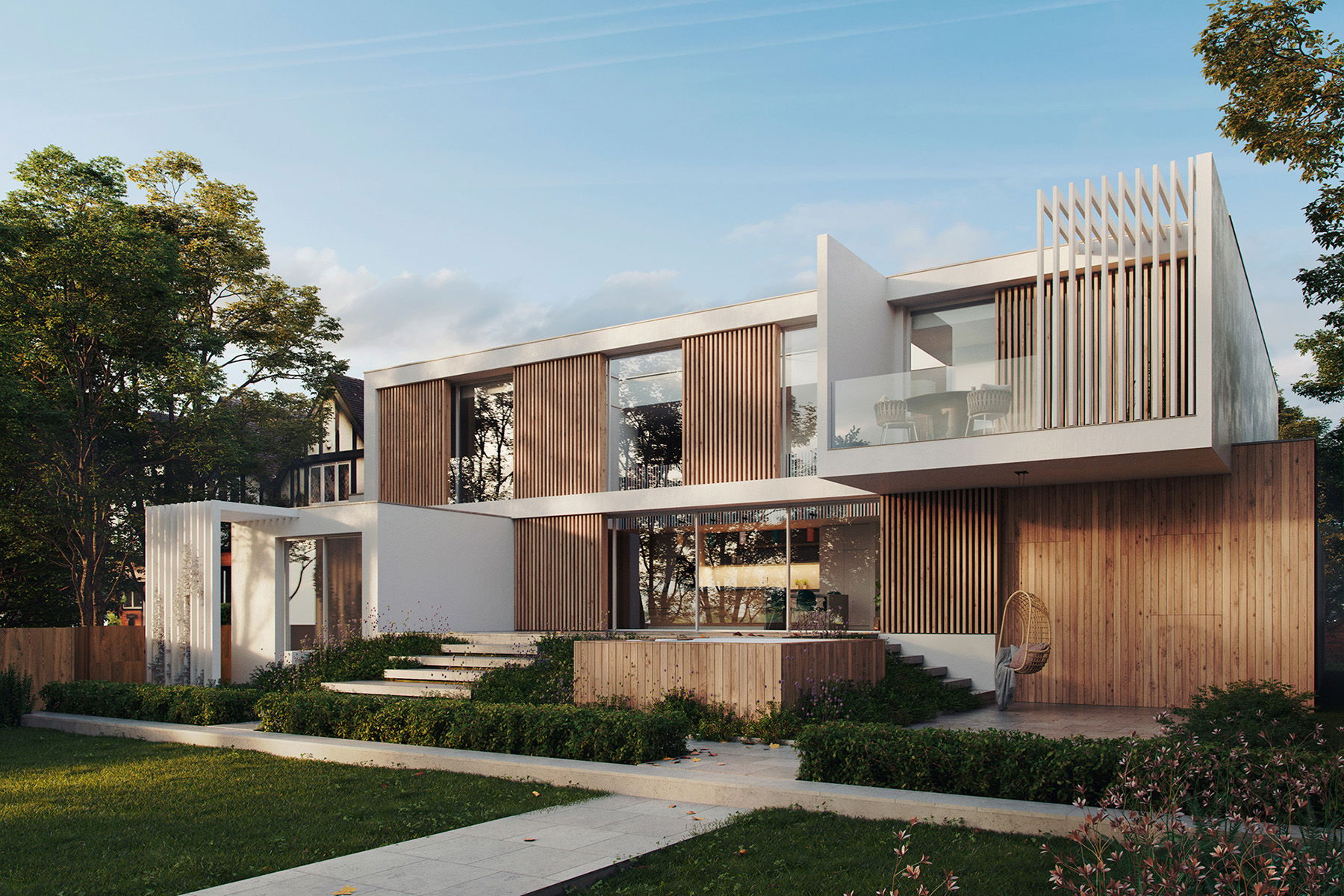Integrating Solar Energy as part of a Sustainable Home Design
Solar photovoltaic (PV) panels have been around for a long time. Most people are familiar with them and how they work; they are a great way to harness free energy from the sun and convert it into electricity.
Solar panel technology is constantly improving, with efficiencies getting better year on year and maintenance costs decreasing as the technology becomes more widely adopted across both residential and commercial sectors.
We installed a PV array on several of our projects, including the flat roof of our sustainable Riverbank project, the focus of our sustainability series. In this article we’re exploring the benefits and advantages of using solar energy, as well as what to consider when opting to integrate PV panels as part of your own new build or home renovation project.

Benefits of PV arrays
Cheap source of energy…
After considering the cost of installation and maintenance, the energy generated by the PV array is essentially ‘free’, meaning you will benefit from reduced electricity bills. Given the unpredictable of energy prices, investing in a PV system helps protect your bills from being hit with sudden hikes in the market.
Although the feed in tariff no longer exists, the Smart Export Guarantee (SEG) has taken its place and requires all large energy companies to pay households for any solar-generated electricity they send back to the National Grid. Unless you have a battery system in place, excess electricity automatically flows back to the grid, allowing homeowners to benefit from both reduced energy expenditure as well additional cash earned back during sunnier periods.
… with increasingly efficient costs
The cost of purchase and installation of PV systems are decreasing as demand for the technology increases. Installation costs can be reduced further by sharing the fee for things like scaffolding, if it is part of a wider renovation or new build house.
Not only this, but costs for operation and maintenance is generally lower than other renewable technologies. Solar panels generally need very little maintenance. Most systems will be tilted at an angle that allows them to be cleaned naturally by rainfall, and keeping an eye on the amount of electricity the system is generating is a good indicator of whether anything might be wrong.


Clean source of energy
PV technology, once installed, captures energy from the sun without emitting any harmful greenhouse gases into the atmosphere. By not using electricity created from fossil fuels, your home will be helping the planet by lowering its carbon footprint and reducing pollution in the atmosphere. The Energy Saving Trust estimates that a typical home PV system could save a tonne of carbon each year.
Renewable vehicle charging
PV arrays are particularly compatible with storage batteries such as the Tesla Powerwall, a battery which we have also installed on our Riverbank project. This allows the PV array to generate energy during the day and charge electric vehicles overnight, rather than using electricity from the national grid which works out more expensive. PV arrays also work well in tandem with other renewable systems. Solar panels could help power a heat pump, for example.
Minimal interference
Unlike heat pumps, PV panels are static, meaning they have no moving parts and make no noise. This makes them a great choice for noise sensitive sites.
Doubling up as air conditioning
PV panels don’t need direct sunlight to work, and can generate electricity even on cloudy days. However, the stronger the sunlight, the more electricity is generated. As hot weather tends to coincide with sunny weather, solar technology is a great way to provide energy for cooling during peak energy demand.

PV arrays are a great choice for residential projects and provide a good solution to energy demand that doesn’t come from the national grid. With clever detailing, they can be hidden behind a parapet or fully integrated into the roof so that their installation doesn’t affect the aesthetics, as we have demonstrated on our Riverbank project. This is an example of how sustainable technology can compliment good design without having to make compromises on aesthetics.
What Next?
We have ambitious sustainability targets when it comes to the holistic design of our buildings and landscapes. Our in-house team of luxury architects, interiors designers and landscapers approach each project with the goal of creating renewable, regenerative living spaces that can be maintained for generations to come.
See more on our approach to designing sustainable architecture and landscapes, or get in touch for initial conversation about your project.